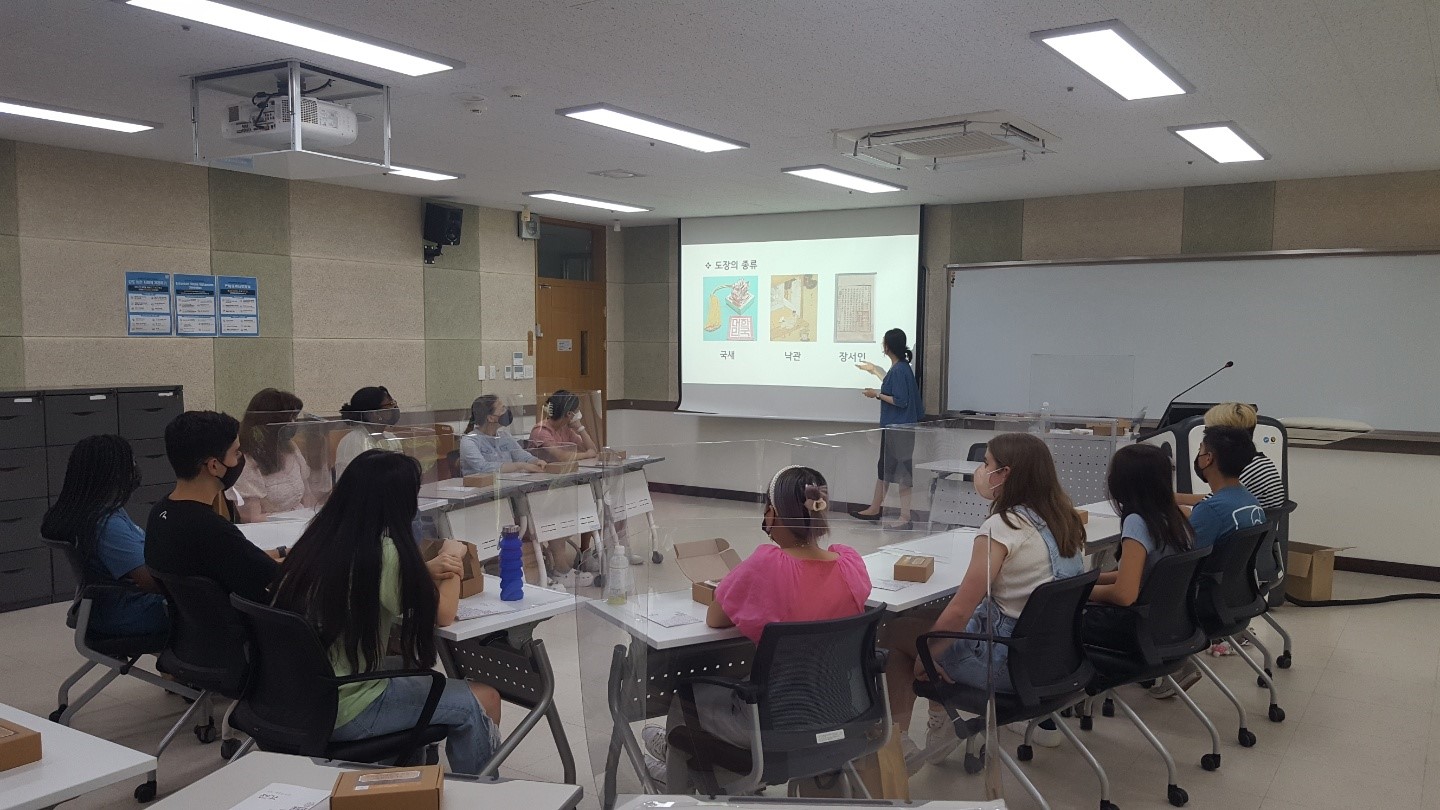NSLI-Y 2022 Korea – Week 6
This week the group learned about traditional stamp making.

We received a lecture about different kinds of stamps.

Dahria designing her stamp.

Dahria engraving the design into her stamp.

Kali working on her stamp.

Daniella touching up her stamp’s design.
We also were able to take a lesson on the Gayageum, a traditional plucked Korean instrument descended from the Chinese guzheng.

Detailing the characteristics of the Gayageum.

Lupita and Kali testing the strings.

Students putting the lesson into practice.

Rudi, Emilyn, and Kali having a discussion with the instructor.
This week we discussed Sejong the Great, the fourth king of the Joseon dynasty, and his creation of the Korean alphabet hangul.

Sejong worked with very difficult people during his reign. While he had to punish his subjects he often resolved conflict with debate and open communication. We discussed about the philosophy behind the creation of hangul and the actual process of making it. Sejong wanted to improve the literacy of the common people and create a written language that was more accessible. Until that point, the Korean language was written with Chinese characters in a script called hanja. Gathering with some of his most trusted advisors, Sejong labored in secret to create hangul. This was to avoid criticism from the noble and scholarly classes.
Students were able to present their short films, created in order to showcase their improved understanding of Korean and their ability to use the language in non-classroom setting. The students showed passion and creativity and demonstrated strong teamwork. One example was a horror short entitled “Stay”. Paying homage to acclaimed Korean filmmakers, the students displayed their Korean mastery. It was filmed in the language building of Gwangju University.

A still from the short film’s climatic scene, featuring Jayden, Rudi, and Dahria.

Behind the scenes.
In order to cement the program’s Korean language education, the students participated in a role-play practice of normal daily life—visiting shops, entertainment venues and workplaces.

Brandon visits a nail shop.
Thu goes about her “day”:

Appointment at the hair salon.

A quick stop at a noraebang establishment (Korean karaoke).

After singing, Thu returns to her job at the “photo shop”.
To celebrate and commemorate the program we conducted a closing ceremony. We reflected on our language journey and shared those reflections with one another; along with words of affirmation, encouragement, and thanksgiving.

Dahria and Jayden emceed the ceremony.

Lupita performed a song in Korean and sang beautifully. She had practiced the song for a week and her pronunciation was excellent.

Students performed a K-pop dance, showcasing their diligent practice and pop-star-professionalism.

All the students sang Arirang, a Korean folk song that dates back nearly 600 years. The song has had a storied place in Korean history, including as an anthem of resistance to Japanese occupation in the first half of the 20th century and as a symbol of unity in the divided Korea of today.


